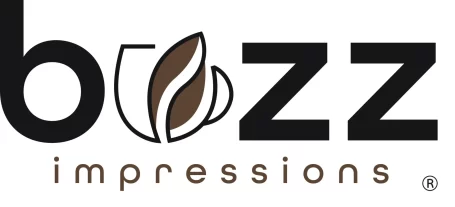Colors are powerful tools when applied correctly. This is especially true when making your trade show display stand out. In this post, we’ll explore how to use effective color branding to help your trade show display stand out from the rest of the crowd.
When developing the color palette for your display, remember that the colors you use can make a huge difference. Your display’s design and visual aesthetic can help or hurt your company’s branding. This, in turn, translates into your ability to capture the attention of attendees at a high-traffic event. Research shows that you have about eight seconds to capture the attention of future clients. With that in mind, the more creative your display, the better. One way you can flex your creativity is with an array of colors. The right blend of colors improves your chances of capturing the attention of future clients without saying a word or lifting a finger.
Here are a few general guidelines to keep in mind when brainstorming your trade show color palette.
Stay on Brand
Selecting colors that will attract future clients is essential. You want the color scheme of your display to evoke the right emotions. However, it would be best if you stay on brand. Furthermore, picking colors that don’t align with your brand or message will likely confuse potential clients and make little to no impact.

Be Mindful of Cultural Significance
Depending on where you’re showing or to whom you’re marketing, you’ll want to consider the local culture and what specific colors mean within the culture. Certain colors may represent one thing in one country and something different in another country. For instance, green typically represents luck, progress, and environmental awareness in western cultures. However, in other cultures, such as Indonesia, green is forbidden since it is associated with exorcisms and infidelity.
Consult an Expert
You should consult a professional graphic designer f you’re not 100% certain which colors will work well together or shine a positive light on your brand. Doing so will ensure that your trade show display is on point and conveys the message that you want it to. Furthermore, seeking the advice of an expert is also an effective way to confirm that your display is pleasing to the eye.
Think Beyond Your Display
Every element of your display will contribute to the success and perception of your trade show display and overall brand. Minor details, such as the color of your flooring, can create psychological barriers you should avoid when designing your display.
The Subtle Meaning of Colors
Red
Red conveys power and often instantly captures the attention of a viewer. Since it is such a dominant color, using too much red can create a visual overload. This is why it is best to use red as an accent color to draw attention to key areas within your display.
Orange
A bright orange demands the viewer’s attention and denotes energy and playfulness. The bright and slightly non-traditional color conveys a fun and hip vibe. It also makes viewers feel that the brand associated with the color is modern and on the cutting edge of the industry. However, your brand may come across as cheap if you use an overly bright hue.

Yellow
Most people typically associate yellow with positivity. Many well-known brands, such as McDonald’s, Ferrari, and Post-It, employ yellow in their visual identity. However, it is worth noting that it is best to use yellow as a secondary color. It can be challenging to read if you don’t pair it with a prominent, more legible color.
Green
Green is a more usable color in various shades and for different brands. Eco companies, financial companies, and health companies often use green prominently. Furthermore, it works well with a lot of other colors. It’s also not so polarizing that it’s off-putting if you use it as your primary color. In short, green is your friend.
Purple
Long known as the color of royalty, purple can take your brand to a prestigious and sophisticated height. As a background, purple is good if you have brighter text since it provides excellent contrast, making it easy to read. However, you need to be mindful of darker trade show venues or if you’re assigned a spot near a wall with less-than-ideal lighting. In either case, you’ll need to bring your lights to compensate for the lack of general lighting if your purple is of the darker variety.

Blue
Most people associate blue with trustworthiness (think about the verified checkmark on Twitter). Blue is a popular choice since it’s easy to blend with other colors and is soft on the eyes. If blue fits your brand and industry, it’s effortless to work it into your trade show display design.
Brown
The majority tend to link this understated color to nature and the Earth. This association makes it ideal for eco-friendly brands. It’s also tied to reliability (UPS, for instance), but it’s one of those colors that need to be an exact fit for your brand, or it will be an eyesore.
Black
Black has a wide range of perceptions and uses. It’s often thought of as classic, valuable, and sophisticated. Black is also a safe color since it conveys stability, and you don’t have to go over the top when pairing it with another color to make it work. It won’t wow anyone, but if you’re comfortable with staying on brand and confident that you’ll get the attention you need at trade shows, black is an easy choice for your display design.
White
Purity, innocence, and cleanliness are the traits people associate with white. However, it can also represent blankness and coldness like a frigid tundra, so you need to use it with great care. White can create a sense of space or add highlights to a design. If you seek austerity and minimalism, white is the ideal color.




